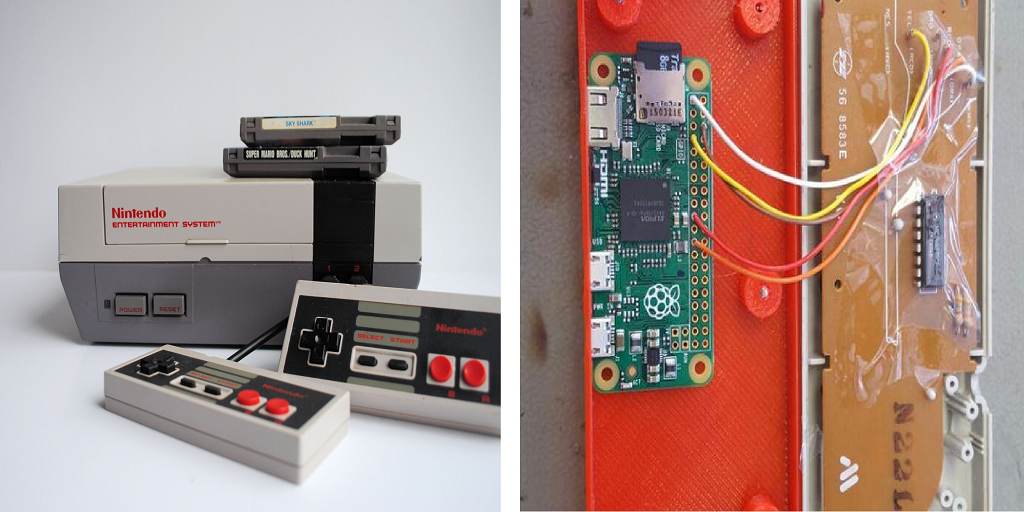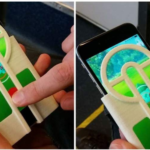

If you are into gaming and 3D printing, you may be part of the craze for nostalgic gaming experiences. The kids who came of age when video games really took off still have those fond memories of sitting on the floor with those old consoles, spending hours playing video games to their heart’s content. Nintendo, of course, the company that brought you both Pokémon and Super Mario, is at the center of this old time video game nostalgia. In order to pay homage to the early gaming days, hackers take old controllers and game consoles, redesigning them for 21st century ends. One such project, covered here, has you “stuffing” a Raspberry Pi Zero into a Nintendo controller for that old school gaming experience. But you’ll need to do some 3D printing to make this work!
Let’s begin with the Raspberry Pi Zero. This small computer is the penultimate in quality hardware at an affordable price. For only $5.00, you get many amazing features that translate into a fully programmable computer–talk about a 21st century technology! But it gets even better as you use your Raspberry Pi Zero, placing it inside an old Nintendo controller and wiring the Pi through the controller buttons.
The 3D printed portion of this project is to design and print a new back for the controller, as the old back becomes too small to contain the new Raspberry Pi Zero inside. Not a problem. In fact, you have two different options here. The first design comes from Tom Van den Bon of South Africa, who explains how he merged a Raspberry Pi Zero with a Nintendo (NES) controller:

“The nes controller is wired onto the gpio and I’m using the gamecon_gpio_rpi software for interface to the nes emulator. I decided not to dremel the back part of the controller, but rather design and print a new one with proper pi zero ports.”
The design is very straightforward. Using no rafts or supports, Tom instructs you how to 3D print your own back, hotglue the Pi Zero into the case, connect Nintendo controller wiring to the Pi Zero, set up your software, and play games!
“W3ace,” or Craig, takes this idea a little further by providing the file for a fancier version of Tom’s design. Craig explains that he upgraded the design and added “a thicker base and mount points to screw down the Pi Zero.” The 3D printed portion of this was printed on a Prusa i3 with solid infill at 0.4 resolution for the first layer and 0.2 resolution for the other layers. This print job did not require rafts or supports, and Craig reports that the end result is taller than Tom’s, but it is “still very manageable as a controller.” (Make sure you go to Craig’s comments to find out which NES wires go to which GPIO pins.) Craig has recently put together an Instructable for his controller to make it more accessible to other makers.
And there you have it: two different versions of the same idea to rejuvenate an old Nintendo controller using 3D printing and some serious dedication to old school gaming. Is this something you might like to try making? Tell us about it in the 3D Printing Retro Gaming with Nintendo and Raspberry Pi forum over at 3DPB.com.
If you're looking to get architectural 3D animation in the USA, our service provides an exceptional way to bring your architectural concepts to life through dynamic, immersive visuals. Through our platform, you can easily request high-quality 3D animations that showcase your designs in motion, offering a detailed view of your project from multiple angles and perspectives. Whether it's for a real estate development, a commercial building, or an urban planning project, our expert team ensures that every detail is captured in a visually compelling animation.
Through our website, you can seamlessly get architectural 3D animation tailored to your project’s specific needs. With our help, you can offer potential clients or investors an engaging experience that goes beyond static images. By integrating CGI animations with real-world settings, lighting, and textures, our team creates a lifelike experience that allows your audience to interact with your project as though it were already built. This service is perfect for presenting complex designs in a clear, visually attractive way that stands out in the competitive architectural market.




